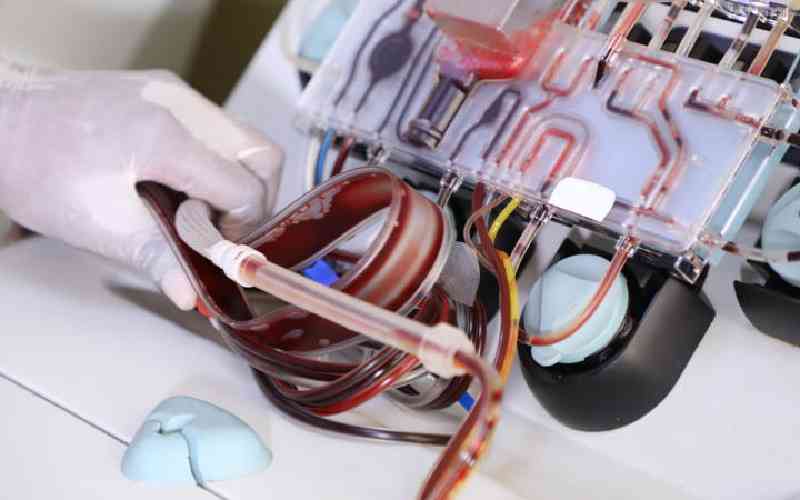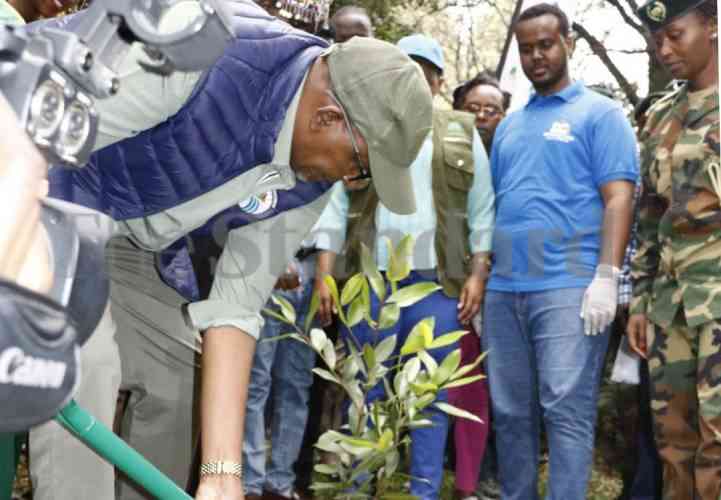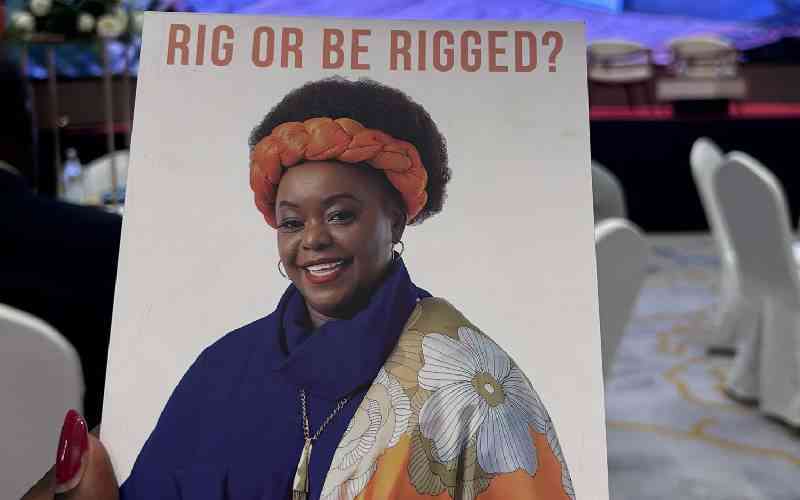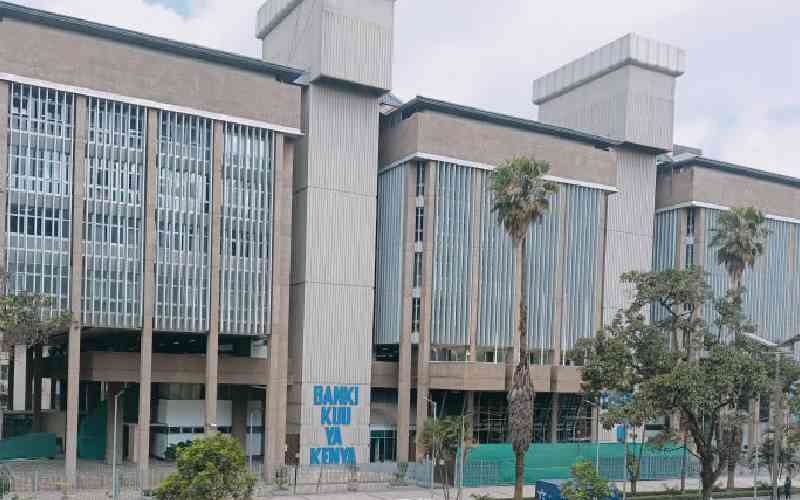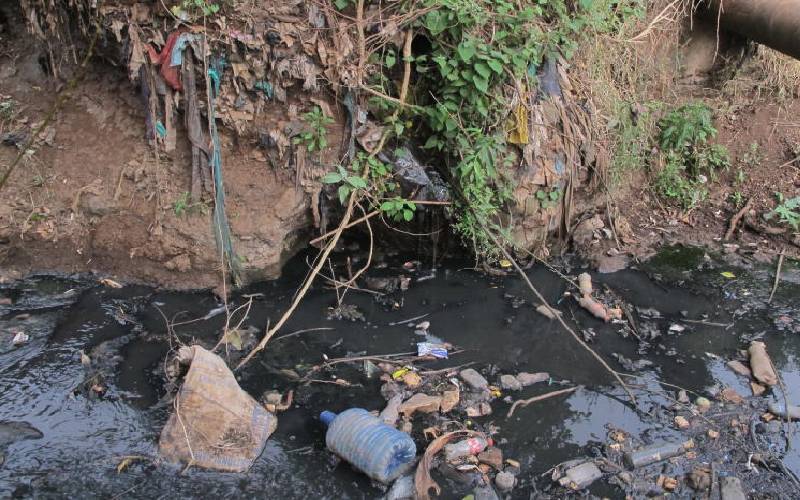
Heaps of garbage define the banks of Kirichwa River near the bridge along Naivasha Road in Dagoretti.
A dog scavenges in the waste, nibbling left over pieces of bread. About 10 metres upstream, a pipe, probably from one of the nearby residential quarters, spews waste water into the channel.
There is about a 100-metre section that has been “cleaned” but the waste is strewn on the riverside, leaving a clear river channel that has dark sewage making its way downstream – the banks are full of filth. This is the sad story of fresh attempts to restore Nairobi River.
On Friday last week, Environment Cabinet Secretary Keriako Tobiko gave an order that any person found discharging raw waste into the river be charged.
Tobiko, during a tour again on Wednesday, acknowledged the humongous task ahead in cleaning the river. This even as director of multilateral environmental agreements in the ministry, Richard Mwendandu, revealed that 70 per cent of Nairobi is not connected to the central sewer system.
“There is too much talk, too many workshops in hotels but the real work that needs to be done is down here,” fumed Tobiko.
The CS could not understand why barely two days after the raids that were conducted last week, the cleaned area had already been restocked with garbage.
Just a few metres from the bridge, there is a farm where raw sewage has formed a swamp beside the river. In the swamp are rows of arrow roots already slashed down by the National Environment Management Authority (NEMA). Higher in the bank are rows of maize. All these are nourished by water from an open sewer manhole whose contents empty into the field and down into the river.
Even as part of the over 600 workers that has been contracted to do the work waded in the murky waters, not far from the banks is a dumpsite with used syringes and needles from local private health facilities that have no proper medical waste disposal mechanisms. The waste was probably dumped during the night.
”I am frustrated and disappointed at the rate at which enforcement is being carried out; we also need to realise that this waste is not generated by the government but by the public and it is their duty to understand that they need to dispose of it responsibly,” said Tobiko.
On the opposite side of the medical dumpsite, a residential estate continuously releases waste water into the river probably from the bathrooms. While cleaning is headed upstream, there is still no formula as to how the slums through which the river passes will be treated.
On Monday this week, Prof Geoffrey Wahungu, the director general of NEMA, says buildings that spew sewer into the waterways will be declared unfit for human habitation.
Wahungu says all offending structures had been mapped out and their GPRS coordinates taken for action. He however says one of the greatest challenges is lack of enough resources to carry out its work.
“We are doing the much we can with the resources we have. It should be known that about 70 per cent of river waste problem is raw waste,” he says, even as it emerged that this year alone, the directorate of urban rivers in the Ministry of Environment has been allocated Sh110 million to clean rivers in Nairobi.
Stay informed. Subscribe to our newsletter
Experts take
Wahungu says landlords collect rent and must be compelled to provide facilities because it is their duty, not the tenants’.
But experts think otherwise. Patrick Muraguri, the chairman of the Community Action for Nature Conservation (CANCO), says an abrasive approach will not achieve much.
He advises, “The solution to this problem lies in public participation. Once the government involves the local communities, they will suggest workable solutions themselves.”
The river, Muraguri argues, has different parts with different communities like slums, middle class estates and industrial zones. Each of these areas need tailor-made solutions, which can only come through engagement with each local community.
“The challenges facing the river in Kileleshwa are different from those in Satellite, Gikomba or Industrial Area and these need different approaches to tackle,” he adds.
 The Standard Group Plc is a
multi-media organization with investments in media platforms spanning newspaper
print operations, television, radio broadcasting, digital and online services. The
Standard Group is recognized as a leading multi-media house in Kenya with a key
influence in matters of national and international interest.
The Standard Group Plc is a
multi-media organization with investments in media platforms spanning newspaper
print operations, television, radio broadcasting, digital and online services. The
Standard Group is recognized as a leading multi-media house in Kenya with a key
influence in matters of national and international interest.
 The Standard Group Plc is a
multi-media organization with investments in media platforms spanning newspaper
print operations, television, radio broadcasting, digital and online services. The
Standard Group is recognized as a leading multi-media house in Kenya with a key
influence in matters of national and international interest.
The Standard Group Plc is a
multi-media organization with investments in media platforms spanning newspaper
print operations, television, radio broadcasting, digital and online services. The
Standard Group is recognized as a leading multi-media house in Kenya with a key
influence in matters of national and international interest.


